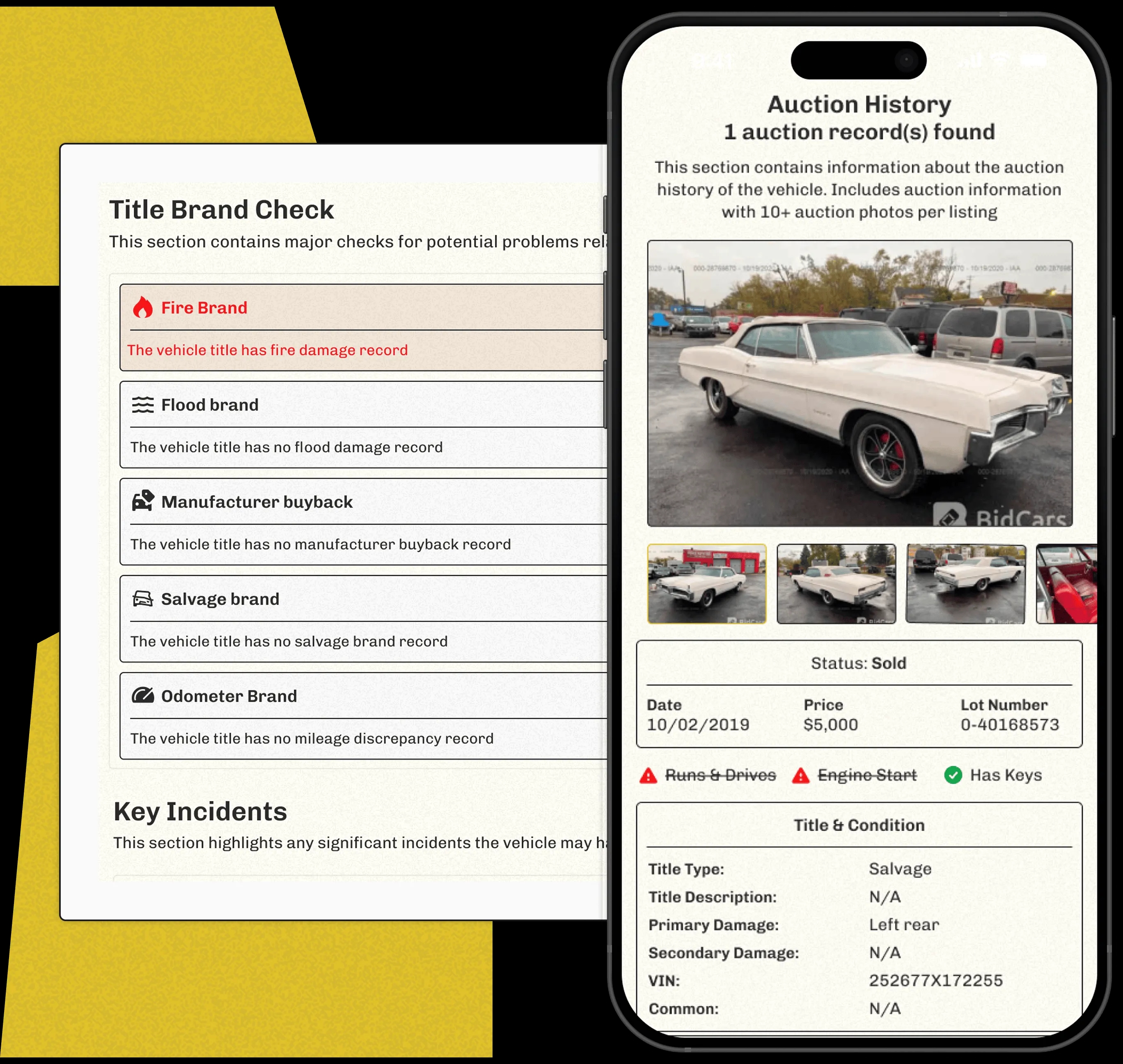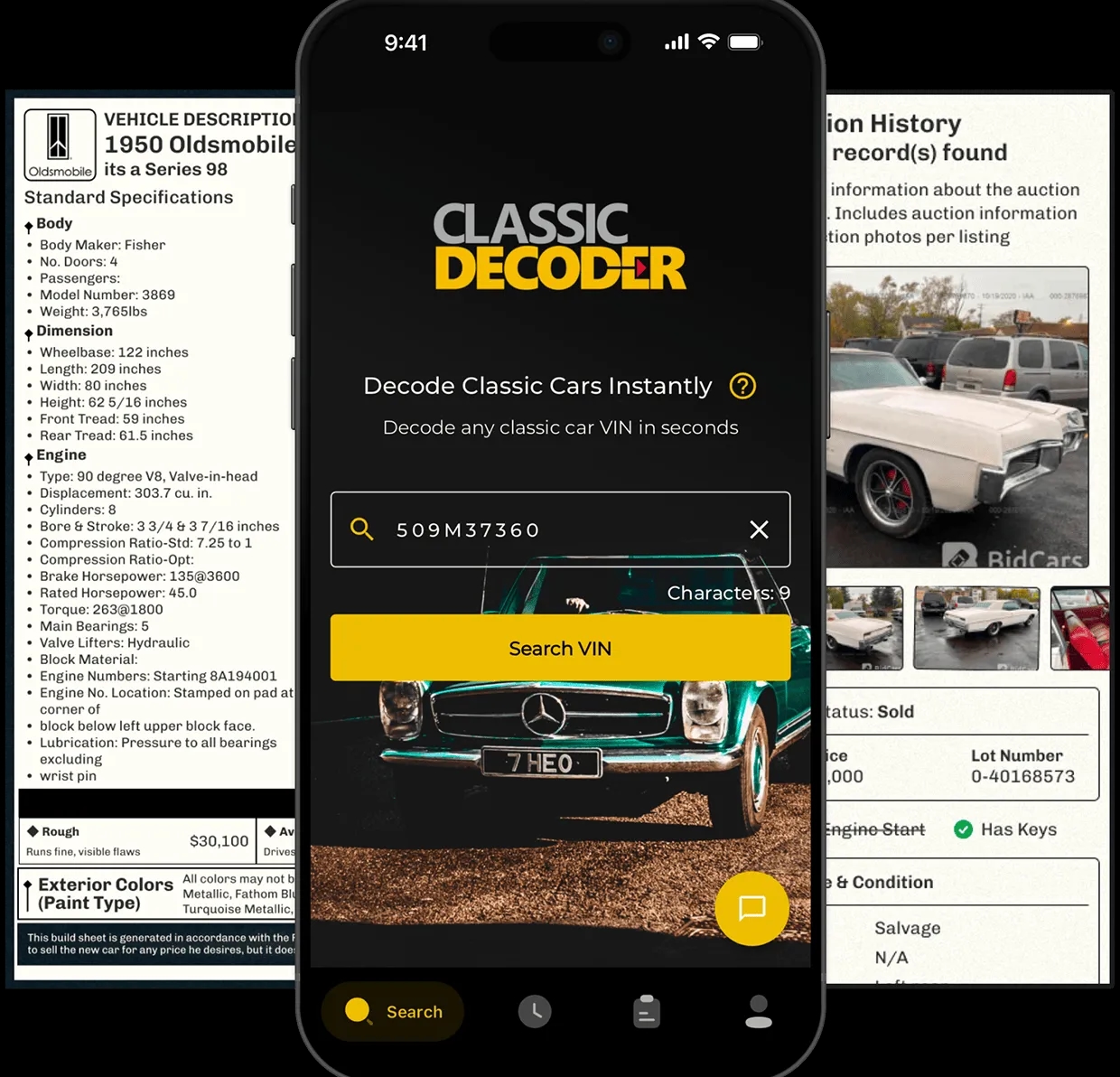1970 Plymouth Satellite
The '70 Plymouth Satellite: a cool, muscle-car-ish cruiser! Big, boxy, and undeniably 70s, it wasn't as raw as its predecessors but still packed a punch. Part of Mopar's popular lineup, it reflects the era's shift towards comfort. Think chrome, long hood, and that classic American muscle vibe. A true time capsule.
Decode Classic VINs to Get Vehicle History Report and Build Sheet
The 1970 Plymouth Satellite: An American Classic
The 1970 Plymouth Satellite is more than a car; it's a gateway to a bygone era of muscle cars and shifting automotive trends. Back in the day, when the world of was less advanced, this model emerged as a true icon. It's got a look and feel that screams vintage muscle, while the period's charm seeps through its design and engineering. This page will take you through the Satellite's captivating history, specs, notable owners, and more.

1970 Plymouth Satellite Models:
Select the vehicle's model to see the correct data for it.
How Much is Plymouth Satellite Worth?
Original MSRP :$2,765.00
Outstanding
Clean
Average
Rough
1970 Plymouth Satellite Specs
Interested in buying a classic car or selling one?
Access detailed history reports for classic vehicles from hundreds of manufacturers.
- Accident Records
- Theft Records
- Loan & Lien Information
- Auction Information
- Salvage Information and more

History of the 1970 Plymouth Satellite
The Satellite took flight during a time when American automakers were shaking things up to fend off foreign rivals. It's a bit like when your favorite diner starts adding exotic dishes to keep up with the new restaurant down the street. Influenced by German aesthetics but bursting with American spirit, the Satellite managed to find a balance between opulence and performance. Maintaining Plymouth's recognizable brand traits, it offered a classy and refined driving experience.
Notable Variants
Back then, Plymouth wasn't afraid to experiment. Legendary tales, like those 1978 Plymouth Fury cars turning up with extra whitewall tires, show just how adventurous they could be. As for the car's heart—the engine—the Satellite offered an array of options. From modest choices to the heavy-hitting V8s, each variant offered its own flavor of performance.
Learn more about a classic car: Get Build Sheet by VIN.
Access reproduced classic build sheets to learn more about your classic vehicle details.
- Standard Specifications
- Original Base Price
- Standard & Optional Equipment
- Exterior & Interior Colors
- VIN ID & Location description

Detailed Specifications
Let's talk shop. The 1970 Plymouth Satellite combined beauty and brawn. Engine choices ranged from the humble 225 cubic-inch slant-six to the raw power of the 426 Hemi. And if power was your thing, the Road Runner's 440 engine didn't disappoint.
Acceleration: The Satellite could smoothly hit the 0-60 mph mark in just under seven seconds.
Quarter-Mile Time: It clocked in at 15.6 seconds, reaching speeds up to 91 mph.
Top Speed: A casual 120 mph, if the road were long enough!
Pop Culture Spotlight
The 1970 Plymouth Satellite wasn't just a road warrior; it was a screen star too. Picture this: its slick design cruised through movies like "Smokey and the Bandit." Even in the TV series "Adam-12," the Satellite played the role of an official police vehicle. It was the kind of car you'd expect to see in a high-stakes pursuit or casually parked in front of the protagonist's house.
1970 Plymouth Satellite Gallery





Interested in Buying or Selling a Classic Car?
Thinking about getting into the classic car game, or selling your prized possession? Here's some sagely advice—look into the vehicle's past. A or a can unveil secrets that VIN numbers alone can't tell you. Here's what you should look for:
Accident Records
Theft Records
Loan & Lien Information
Auction Information
Salvage Information and more
Popular Figures Who Own the Satellite
Jay Leno
This charming late-night talk show host, Jay Leno, is known for his enviable car collection. When it comes to Mopar muscle, Leno doesn't just kick tires—he drives them passionately. His garage acts like a public museum, revealing just how much he's smitten by the car's retro allure.
Richard Carpenter
Richard Carpenter, of The Carpenters fame, often dabbles in classic car restoration. His interest in the 1970 Plymouth Satellite proves his keen appreciation for nuanced design and performance finesse.
John Cena
WWE star John Cena blends muscle strength with muscle cars. His collection of automobiles pays homage to 1970s icons, including his very own Plymouth Satellite. It's a nod to his era-defining larger-than-life persona.
Fun Facts about the Plymouth Satellite
Cultural Footprint:
You'll find the Satellite's influence in unexpected places. It's even represented in Matchbox collections across America—often in hot wheels competitions!
Collector's Gem:
Well-preserved Satellites can fetch a pretty penny. At auctions, they sometimes soar close to $167,200! Not bad for a car that's middle-aged.
For anyone on the fence about getting into classic cars, or those who just want to reminisce about a golden era, the 1970 Plymouth Satellite is a testament to what's possible when passion meets innovation.
Classic VIN Decoder App |Now available on both Android and iOS!
At Classic Decoder, we believe that developing a mobile app is a great way to extend our classic car data solution hub to as many users as possible across the globe. Our app is built with users and precision in mind. It holds the key to unlocking the history and details of any retro car at your fingertips. It also comes with fascinating and user-friendly features that make it stand out from other mobile apps designed for this purpose.
The Classic Decoder app lets you decode and lookup any classic VIN in a flash. Access accurate vehicle information and history, make an informed decision faster, and buy and trade in classic cars with confidence.

Download The Classic Decoder App now.
Some unique features include:
- Support all classic VIN lengths from 5 to 13 digits
- Support classic cars produced from 1910 – 1980
- Online Garage features – to add and manage your vehicles
- 24/7 Customer Support
- Easy onboarding for first-time users
Explore Plymouth Satellite from Other Years
Frequently Asked Questions
Well, let's see... Spotting a '70 Satellite? It's got that unmistakably boxy, kinda slab-sided profile, you know? Think of it like a really well-built brick—solid and dependable. Key features include the distinctive rectangular headlights, a long hood, and that iconic, somewhat low-slung stance. The taillights are also pretty unique to the year; they're horizontal and stretch across the rear, really emphasizing that wide, strong back end. And of course, the badging! Make sure to check for the correct Plymouth and Satellite emblems—fakes are out there, sadly. They’re easy to spot with a bit of practice, though. Basically, if you see a big, sturdy, somewhat square-shaped car from that era with those features, chances are pretty darn good you’re looking at a 1970 Plymouth Satellite. Oh, and the grille! Don't forget about the grille. It's a pretty significant detail.
Okay, so the '70 Satellite? It offered a pretty wide range of engine choices, from pretty tame to totally wild, if you were so inclined. You had your six-cylinder options, good for everyday driving, a solid workhorse. Then, there were a bunch of V8s—some pretty mild, others... well, let's just say they could really move. You're looking at options ranging from around 230 horsepower all the way up to, you guessed it, the mighty 440 Magnum. Now that thing was a beast, let me tell you; truly a muscle car powerhouse. It really depended on what you wanted from your car; daily driver or weekend warrior. Choosing the right engine was kinda like picking the right tool for a job, you know?
The transmissions available for the 1970 Satellite varied depending on the engine choice, naturally. The smaller engines often came with a three-speed manual, which was pretty standard at the time. You’d also find a three-speed TorqueFlite automatic transmission frequently paired with the lower-horsepower V8s, providing a smooth, easy driving experience. The more powerful V8s, especially the big-block 440 Magnum? Those usually came with the heavy-duty TorqueFlite automatic; you definitely needed something that could handle all that power. Man, those things could shift! You could also find some with the four-speed manual, if you were looking for a really engaging driving experience; but those are a bit rarer, though pretty cool.
The '70 Satellite came in a couple of different body styles; you had your two-door hardtop, which was a popular choice, a classic coupe. There was also the four-door sedan, a bit more practical for families and those who needed extra space. The two-door hardtop is generally considered the sportier, more stylish of the two – but honestly, it just depends on your priorities. Think of it this way: hardtop for style, sedan for practicality—classic car conundrum!
Now this is tricky; pinpointing the exact value of a classic car like a '70 Satellite is like trying to catch smoke. It really depends on a whole lot of factors. Condition is absolutely key – a pristine, numbers-matching car will fetch a whole lot more than one that’s seen better days, or has been heavily modified. Rarity of options (like specific engine and trim combinations) also makes a difference. The overall condition of the car and any modifications will significantly affect the price. Location can also play a role, along with market trends and the current collector car market. Check online resources and classic car price guides for a general idea; but honestly, it’s best to get it appraised by an expert if you're seriously thinking about buying or selling one. You don't want to get a bad deal!

